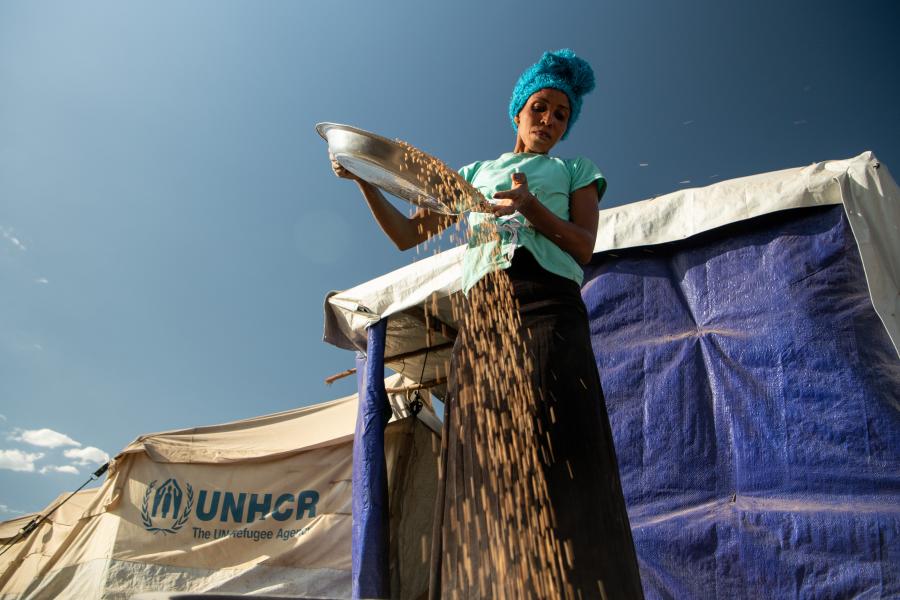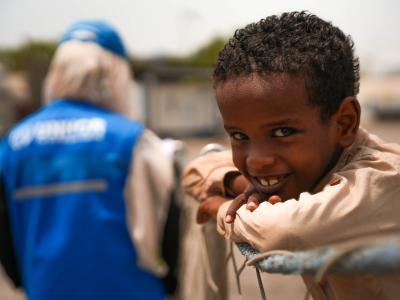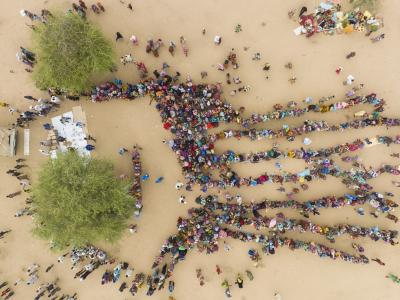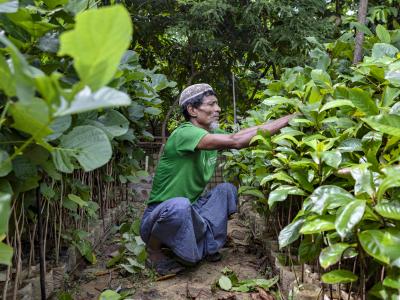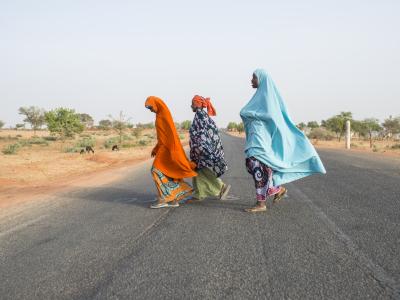Results in 2023
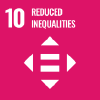
Although most people who have been forced to flee from their homes want to return one day, the reality is that very few are able to do so, and more and more find themselves in situations of protracted displacement. There were 59 protracted refugee situations in 37 countries in 2023, a slight increase as Congolese refugees in Kenya and Somali refugees in Uganda were classified as protracted.
Two important gauges of local integration are refugees’ land and housing rights in the country that hosts them and their coverage by national social protection systems. Both showed little sign of overall positive momentum in 2023. 41 UNHCR country operations collected data on the right to housing and/or land tenure, and 26 reported that less than 25% of refugees and asylum-seekers had secure tenure rights. In most of the 49 countries reporting data on national social protection systems, the majority of refugees and asylum-seekers were not covered by those systems.
However, there were improvements in access to land for agriculture, with 54% of refugees residing in countries with unrestricted legal rights to use land for agriculture, up from 40% in 2021, and improvements in property rights, with 63% of refugees residing in countries where they had unrestricted legal rights to own or lease property for business purposes, up from 46% in 2021. 2023 also saw an overall positive trend in refugees’ access to opportunities for self-reliance, thereby creating notable pathways to local integration.
UNHCR's largest investment in local integration in 2023 was in Iraq, where the agency’s Area Based Programming for Protection and Solutions (A2PS) initiative promoted the integration and reintegration of persons forced to flee, including Syrians and internally displaced Iraqis. The programme entails the identification of locations where these groups live side-by-side with vulnerable host communities, and the development of projects that support the provision of quality public services through relevant government bodies, in partnership with development actors. 12 A2PS projects were completed throughout 2023, including the rehabilitation of water treatment plants and irrigation canals, the solarization of street lighting, the construction of hydroponics greenhouses, and enhancements to public parks and markets. In 2023, 173,540 refugees, IDPs, and locals benefited from these interventions.
UNHCR's second-largest integration operation was Uganda, the third largest refugee-hosting country worldwide, where the Government has provided refugees living in settlements with plots of land for agricultural use. Refugees in Uganda continue to enjoy many of the same rights as locals. While Ugandan law also allows refugees who have been in the country for 20 years to be naturalized, many refugees face difficulties providing documentary evidence to qualify. There is furthermore limited awareness among refugees of these provisions and limited data on naturalization. UNHCR – in an effort to overcome these barriers – continued its work with legal partners throughout 2023.
UNHCR continued its advocacy for secure housing, land and property rights in South Sudan through the provision of legal counselling, strengthening dispute resolution mechanisms, facilitating the issuance of tenure documents, and the construction of housing for persons with special needs. With social protection systems almost non-existent, UNHCR also supported the World Bank with the launch of its “South Sudan productive safety net for socioeconomic opportunities project.”
UNHCR supported the Government of Zambia in the formulation of its National Refugee Policy and Implementation Plan, which aims to remove barriers to self-reliance, promote refugee inclusion in national systems, and enable refugees to contribute to the local economy. The agency also continued its advocacy and capacity-building work in Angola, where the Government resumed refugee registration after an eight-year suspension and recognized refugee status for all asylum-seekers who had processes pending prior to 2015. UNHCR supported the Government with preparations to issue essential documentation to around 28,300 asylum-seekers. The Government also decided to issue residence permits to all registered refugees and asylum-seekers from Liberia, Sierra Leone, and Rwanda who opted for local integration during a screening in 2021.
With a vision of transforming Kenya’s decades-old refugee camps into integrated settlements, in June 2023, the Government of Kenya in collaboration with UNHCR and other partners officially announced its intention of re-aligning the country’s approach to refugee management with the objectives of the Global Compact on Refugees, via the multi-year, multi-partner, “Shirika Plan”, an important shift towards greater inclusion of refugees and improved socioeconomic prospects for host communities and the wider Kenyan society.
Convened jointly by UN-Habitat and the Government of Ethiopia, the 2023 Global Refugee Forum multi-stakeholder pledge on “Climate resilient sustainable human settlements for refugees and their hosting communities” brought into focus the need for sustainable and integrated approaches to environmental and climate action, shelter and housing, access to basic services and improved urban planning and management in refugee-hosting countries. The pledge drew a total of 43 commitments, including notable pledges from the Government of Kenya – towards the roll-out the Shirika Plan; the Government of Switzerland – supporting planning for sustainable settlements via the Geneva Technical Hub; and the Government of Germany – through scaled-up commitments on water and energy infrastructure, and employability and entrepreneurship in the context of the Shirika Plan.
Further to this, the Government of the United States of America (in its capacity as 2022-2023 Chair of the MIRPS Support Platform) pledged in support of the MIRPS joint pledge on integration of displaced persons, in alignment with the MIRPS member States’ efforts to advance the self-reliance of forcibly displaced populations across Central America and Mexico. The US Government also committed to supporting – through UNHCR – targeted projects with each MIRPS State to implement good practices that foster local integration for refugees and other displaced persons in the region.
Core indicators

16.1 Proportion of refugees and asylum-seekers with secure tenure rights to housing and/or land

16.2 Proportion of refugees and asylum-seekers covered by national social protection systems
Challenges to achieving outcomes
Amidst persistent policy and administrative barriers across many operations, local integration and inclusion remain elusive for a significant proportion of refugees worldwide. With restrictive policies and procedures inhibiting the timely processing of applications for naturalization – where the legal provisions permit – refugees largely remain in limbo, with limited access to opportunities for employment, entrepreneurship, financial and social protection services.
Access to secure housing, land and property rights also persists in many refugee-hosting situations. While UNHCR continued its advocacy for secure housing, land and property arrangements in host countries – for residential, subsistence and entrepreneurial purposes – there was a need for greater engagement of development actors and more transparent processes that enable refugees to participate in decision-making on how land is used, managed, and developed.
Financial overview
Global expenditure and budget for Local integration and other local solutions
$159 million spent against a budget of $382 million
$223 million of unmet needs or 58% of the budget

Prominent cultural and media organizations celebrate refugees as agents of change
“We were here”, an original documentary series from YouTube and USA for UNHCR, challenged stereotypes by featuring refugees and YouTube creators coming together over common interests and shared creativity. The three short films included the inspiring stories of inventors Mohammad and Simone Giertz, musicians Fo Sho and Jax Jones, and the passion for food growing shared by Congolese refugee Bemeriki and Welsh vegan chef Gaz Oakley.
Refugees have hopes and dreams like anyone else, and being able to do what matters most to them has the power to impact the world. In Germany, UNHCR’s work received significant visibility at the annual season finale at the Waldbühne in Berlin thanks to the strong partnership between the Berliner Philharmoniker and UNO-Flüchtlingshilfe, UNHCR’s National Partner in Germany. Through a series of concerts in winter 2023/2024, the musicians called on the audience to support UNHCR's winter campaign.
Partnering directly with refugees to create content is a vital part of UK for UNHCR’s public engagement work. In 2023, it partnered with high profile photographer Pattie Boyd and Ukrainian, Syrian and Afghan refugees living in the UK to launch “Beyond the Headlines”. This creative project spotlighted the human stories too often lost among large scale media headlines about refugee crises around the world, and brought these personal, lived experiences to national audiences. The series was featured by British Vogue, The Guardian and Stylist magazine. In Japan, the Refugee Film Festival showcased six films, including five premieres in Japan, and attendance jumped fourfold from 2022 to around 4,000 participants, while the involvement of UNHCR Goodwill Ambassador MIYAVI and influencers from various fields helped to draw media interest. As a spin-off initiative, Japan for UNHCR supported screenings organized by schools, municipalities, corporations and foundations across Japan through the year.
